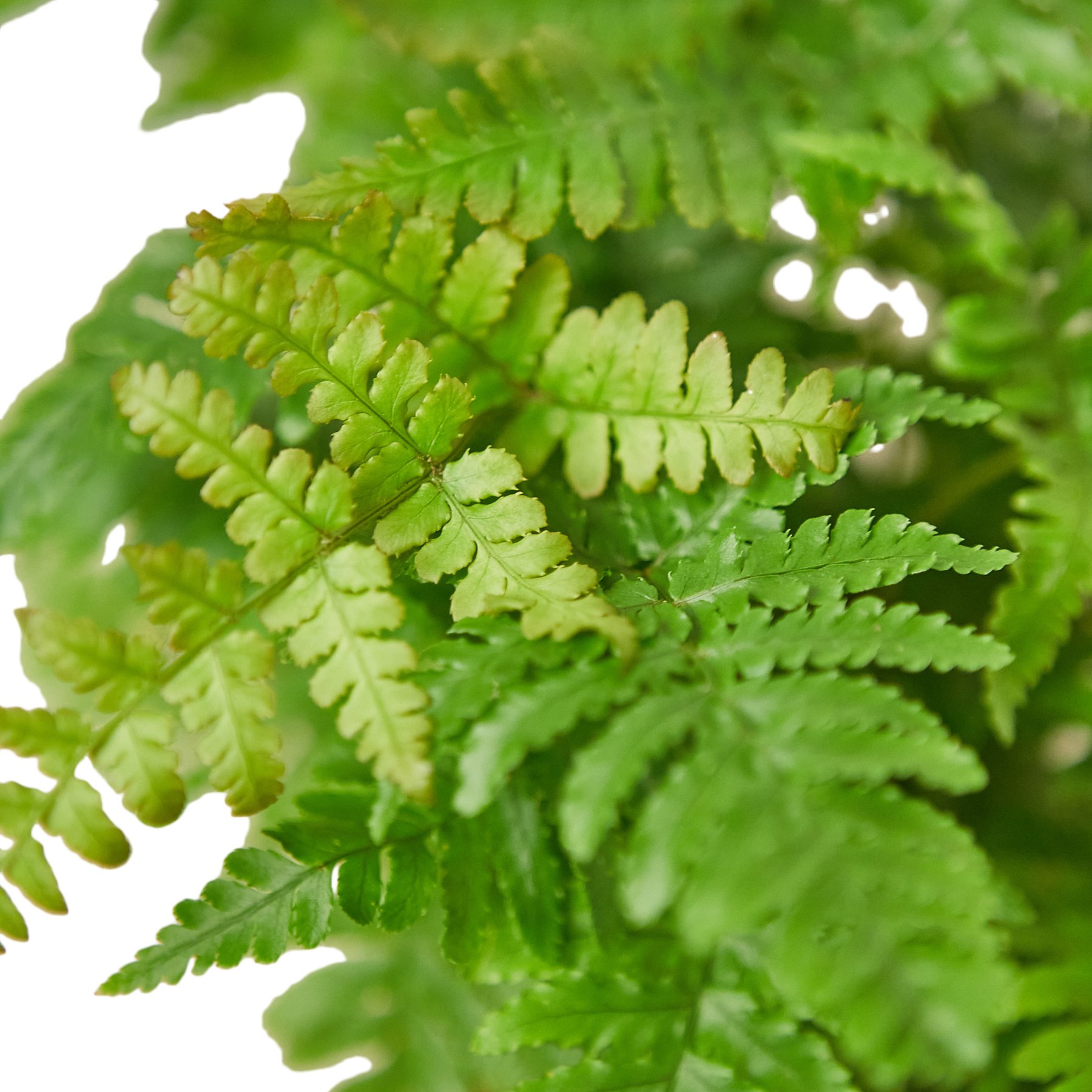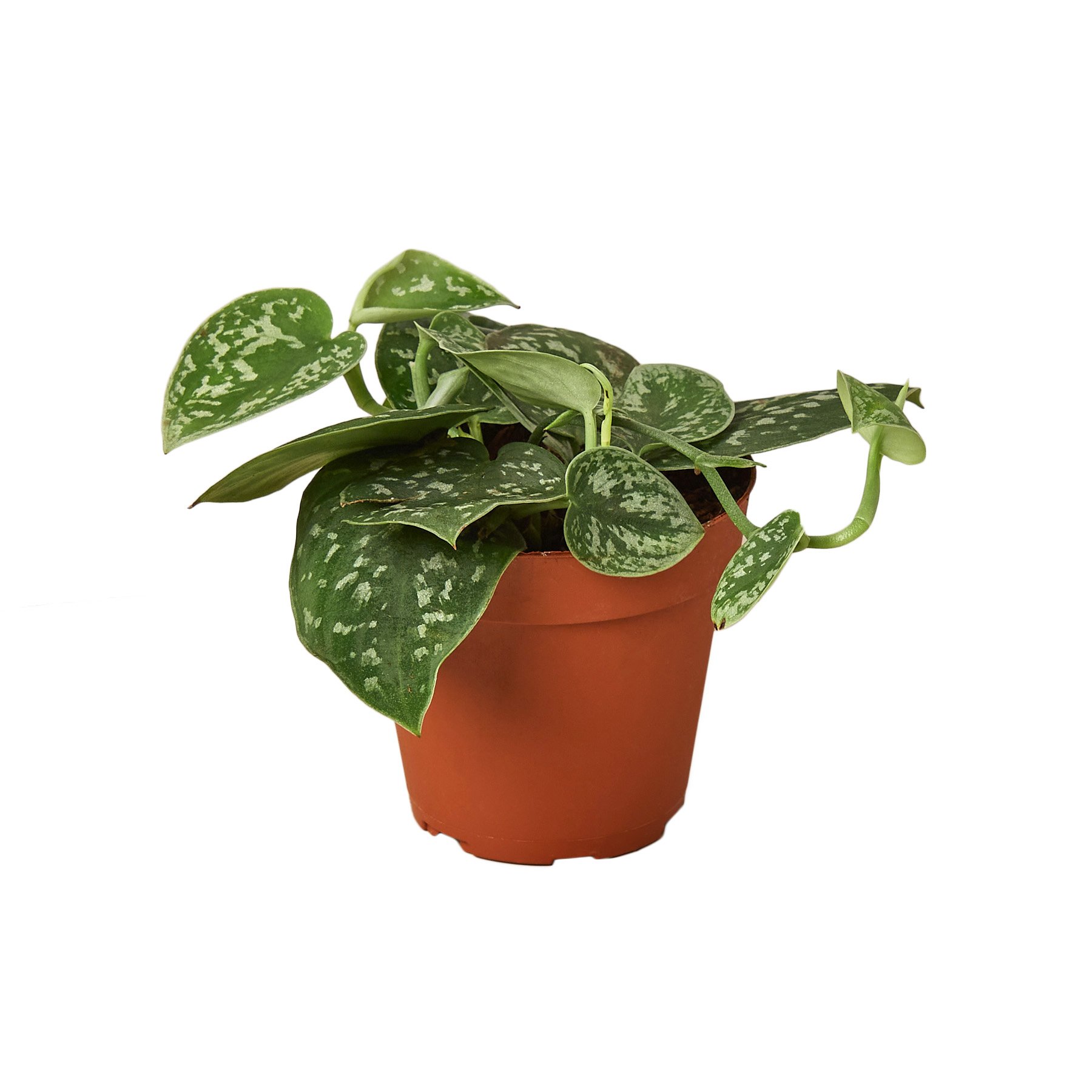Autumn Fern Houseplant
Autumn Fern Houseplant — known for its vibrant green fronds that take on a distinctive autumnal hue, is a resilient and visually appealing plant. With a preference for bright indirect light, it thrives when placed near a window with filtered sunlight. Ideal for both home and office environments, the Autumn Fern adds a touch of natural beauty to spaces with its graceful foliage, requiring periodic pruning to maintain its health and aesthetic appeal.
Botanical Classification: Sansevieria trifasciata
Common Name: Snake plant, Mother-in-law's tongue
CARE GUIDE:
Light. For optimal growth, provide your Fern with bright indirect light. Excessive direct sunlight can result in foliage burn, while insufficient light may cause the distinctive autumnal colors to diminish. Consider using a grow light if you're concerned about inadequate natural light in your space.
Water. Ensure the soil of your Fern is 25-50% dry before watering. Give it a thorough watering until water starts to drain from the bottom, then discard any excess water.
Humidity. The Fern thrives in a humid environment. If the air in your home lacks humidity, consider using a pebble tray or positioning a humidifier nearby.
Toxicity. Non-toxic to pets and humans.
Additional Care.As the plant matures, it is natural for the lower, older fronds to turn brown. Promote healthy new growth by consistently removing any dead fronds from the plant. Use clean, sharp pruning scissors or plant snips to cut stems at the soil line.
Autumn Fern Houseplant — known for its vibrant green fronds that take on a distinctive autumnal hue, is a resilient and visually appealing plant. With a preference for bright indirect light, it thrives when placed near a window with filtered sunlight. Ideal for both home and office environments, the Autumn Fern adds a touch of natural beauty to spaces with its graceful foliage, requiring periodic pruning to maintain its health and aesthetic appeal.
Botanical Classification: Sansevieria trifasciata
Common Name: Snake plant, Mother-in-law's tongue
CARE GUIDE:
Light. For optimal growth, provide your Fern with bright indirect light. Excessive direct sunlight can result in foliage burn, while insufficient light may cause the distinctive autumnal colors to diminish. Consider using a grow light if you're concerned about inadequate natural light in your space.
Water. Ensure the soil of your Fern is 25-50% dry before watering. Give it a thorough watering until water starts to drain from the bottom, then discard any excess water.
Humidity. The Fern thrives in a humid environment. If the air in your home lacks humidity, consider using a pebble tray or positioning a humidifier nearby.
Toxicity. Non-toxic to pets and humans.
Additional Care.As the plant matures, it is natural for the lower, older fronds to turn brown. Promote healthy new growth by consistently removing any dead fronds from the plant. Use clean, sharp pruning scissors or plant snips to cut stems at the soil line.
Autumn Fern Houseplant — known for its vibrant green fronds that take on a distinctive autumnal hue, is a resilient and visually appealing plant. With a preference for bright indirect light, it thrives when placed near a window with filtered sunlight. Ideal for both home and office environments, the Autumn Fern adds a touch of natural beauty to spaces with its graceful foliage, requiring periodic pruning to maintain its health and aesthetic appeal.
Botanical Classification: Sansevieria trifasciata
Common Name: Snake plant, Mother-in-law's tongue
CARE GUIDE:
Light. For optimal growth, provide your Fern with bright indirect light. Excessive direct sunlight can result in foliage burn, while insufficient light may cause the distinctive autumnal colors to diminish. Consider using a grow light if you're concerned about inadequate natural light in your space.
Water. Ensure the soil of your Fern is 25-50% dry before watering. Give it a thorough watering until water starts to drain from the bottom, then discard any excess water.
Humidity. The Fern thrives in a humid environment. If the air in your home lacks humidity, consider using a pebble tray or positioning a humidifier nearby.
Toxicity. Non-toxic to pets and humans.
Additional Care.As the plant matures, it is natural for the lower, older fronds to turn brown. Promote healthy new growth by consistently removing any dead fronds from the plant. Use clean, sharp pruning scissors or plant snips to cut stems at the soil line.












